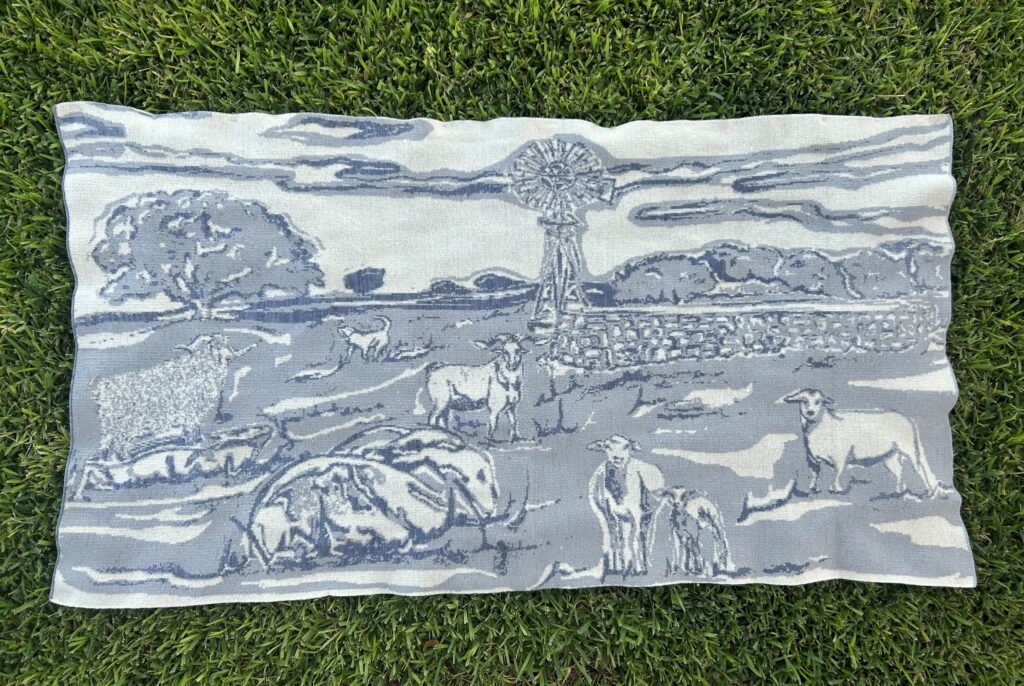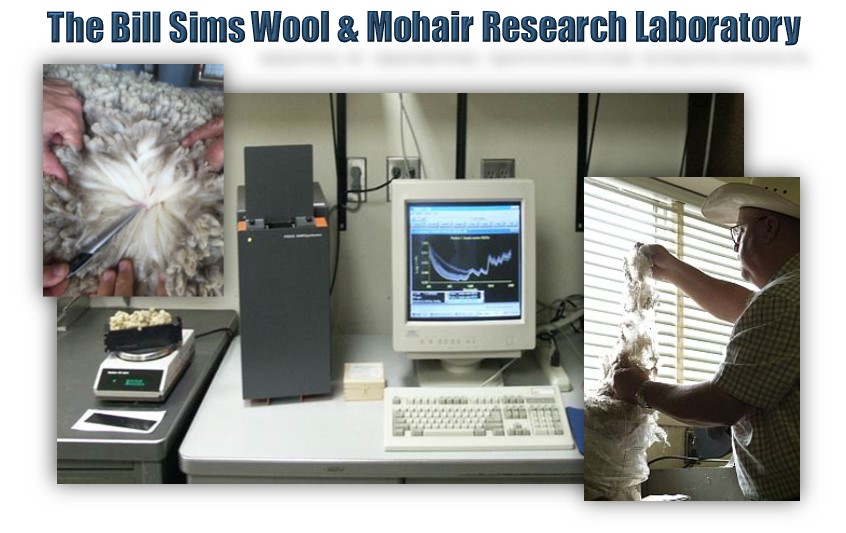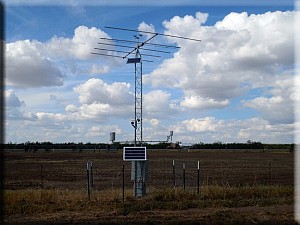One of the more accurate devices available for measuring the amount of moisture in the soil is the neutron moisture meter (neutron probe).
To assist the reader in understanding the special terms used in describing the neutron moisture meter’s functions and operation, the following definitions are provided.
- Alpha Particle: A heavy high-energy particle, containing two protons and two neutrons.
- Fast Neutron: A high-energy neutron, which travels at a speed of about 6,000 miles per second.
- Flux: The number of particles crossing a unit of area per unit of time.
- Half-Life: The amount of time required for a radioactive element to decay to one-half of its original strength.
- Neutron: Elementary nuclear particle with a mass of one and a charge of zero.
- Slow Neutron: A low-energy neutron, which travels at a speed of about 1.7 miles per second.
- Source: A small sealed capsule which contains a mixture of radioactive material and beryllium.
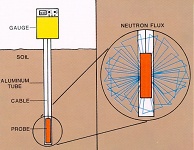 The probe is lowered into the soil down an access tube where neutrons are emitted and interact with soil water. The density of the neutron flux is dependent upon the amount of water in the surrounding soil.
The probe is lowered into the soil down an access tube where neutrons are emitted and interact with soil water. The density of the neutron flux is dependent upon the amount of water in the surrounding soil.
The neutron moisture meter consists of two main components, a probe and a gauge. The probe contains a source of fast neutrons, and the gauge monitors the flux of slow neutrons scattered by the soil. In using the neutron meter, a cased hole in the ground is necessary for lowering the probe to obtain readings.
The Source
The source of fast neutrons is generally obtained by mixing alpha particles from a radioactive emitter with beryllium. Beryllium atoms contain a loosely held neutron in their nucleus. When bombarded with alpha particles, beryllium is converted to carbon, and a high-energy neutron is released.
The source materials are chosen for their longevity. They can be used for a number of years without an appreciable change in radiation flux. Neutrons emitted by the source have an average speed of about 6,000 miles per second and are called “fast neutrons.”
How It Works
The fast neutrons are emitted in all directions, where they collide with atoms in the soil. Through repeated collisions, they are scattered and some lose part of their energy. As the energy is lost, the neutrons are slowed to a speed of about 1.7 miles per second. Neutrons that have been slowed are said to be “thermalized” and are called “slow neutrons.” The neutron detector in the neutron moisture meter is designed to ignore fast neutrons and count only thermalized or slow neutrons.
The average energy in a collision with another atom is much greater with atoms of low atomic weight than in collisions involving heavier atoms. Hydrogen is the only element with a low atomic weight that is found in significant amounts in typical soils. Hydrogen found in soils is almost entirely in the form of water. The occurence of hydrogen in water allows for the use of the neutron probe to measure soil water content.
The principle involved in the neutron method of measuring soil moisture is as follows. When a source is lowered into the soil and fast neutrons are emitted, the soil causes the neutron to slow and scatter. The result is that the probe becomes surrounded by a cloud of slow neutrons. The density of the neutron cloud around the probe does not increase indefinitely, but reaches an equilibrium determined by the rate neutrons are absorbed into the soil. If the soil is dry, the cloud of neutrons will be less dense and extend further from the probe. If the soil is wet, the neutron cloud will be more dense and extend a shorter distance.
The density of the neutron cloud is measured by the detector and the resultant signals are processed electronically and displayed as a number on the front panel of the gauge. The gauge reading is an index of soil moisture.
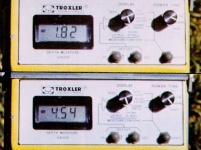 The upper gauge reading of 1.82 inches is representative of a dry Acuff Loam soil. The lower gauge reading of 4.54 inches of water per foot is typical of the same soil after full irrigation where the soil is near field capacity.
The upper gauge reading of 1.82 inches is representative of a dry Acuff Loam soil. The lower gauge reading of 4.54 inches of water per foot is typical of the same soil after full irrigation where the soil is near field capacity.
With the commonly used americium-beryllium source, the so-called sphere of influence, or effective radius of measurement, varies with a radius of less than four inches in wet soil to ten inches or more in dry soil. Measurements close to the surface (for instance, within six to eight inches of the surface) are not accurate when the soil is dry because of the escape of fast neutrons through the soil surface. A special surface probe is used to measure the moisture in the top layer of the soil.
Access Holes
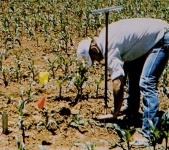 An access hole and tube must be provided at each measurement site to allow the probe to be lowered into the soil. Tubes should be installed in snug-fitting holes pre-drilled with a hand or machine operated soil core barrel or auger. Placing the access tube in an oversized hole and back filling is not recommended.
An access hole and tube must be provided at each measurement site to allow the probe to be lowered into the soil. Tubes should be installed in snug-fitting holes pre-drilled with a hand or machine operated soil core barrel or auger. Placing the access tube in an oversized hole and back filling is not recommended.
Access holes should be lined with a durable tubing which will hold the dimensions of the hole at a constant size and exclude free water from moving into the hole. The access tube should be as small as possible, yet allow easy movement of the probe, have minimum wall thickness, and be made of a material that does not hender the movement of neutrons.
Aluminum is practically transparent to neutrons and, therefore, is a desirable material for access tubes. Other types of tubes have been used successfully with appropriate calibration curves.
There are at least five conditions that should be met in the placement of access tubes.
- The site should be representative of the field to be monitored.
- No void spaces should exist between the access tube and soil.
- Mixing of soils adjacent to access tubes should be avoided during placement.
- No vertical flow of water should occur along the access tube from the surface.
- The top of the tube must be plugged to exclude water.
Permanent tubes are buried below plow depth and covered with soil. The soil cover is removed when measurements are to be made. This is satisfactory for annual measurements, such as those used in the High Plains Underground Water Conservation District No. 1 and Natural Resources and Conservation Service’s annual pre-plant soil moisture monitoring program.
When tubes are to be monitored more often, they should be installed in the crop row after seedling emergence with the top extending above ground.
Calibration
Other factors besides soil water may affect neutron moisture meter measurements. Certain elements in the soil (e.g., boron, cadmium, iron and chlorine) have a high absorption capacity for slow neutrons. Other forms of soil hydrogen, such as humus, plant organic matter, and water bound in the crystalline structure of calcium carbonate and gypsum cause inaccurate readings.
Therefore, measurements taken with a neutron moisture meter must be corrected to account for these factors. In conjunction with the annual pre-plant soil moisture monitoring program, the High Plains Water District and the Natural Resources and Conservation Service have developed calibration curves for the major soil types on the Texas High Plains. These are available upon request from the Water District’s Lubbock office and when properly used should prove adequate for any irrigation scheduling program.
Interpreting the Data
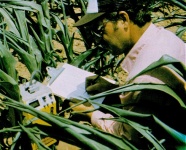 Neutron moisture meter measurements are correlated to soil types. The neutron moisture meter measures the TOTAL water content of a soil. Only a part of the water in a soil is available for plant use. The amount of water depleted from a soil (soil water deficit) is determined by subtracting the corrected neutron meter measurement from the total water-holding capacity of the soil.
Neutron moisture meter measurements are correlated to soil types. The neutron moisture meter measures the TOTAL water content of a soil. Only a part of the water in a soil is available for plant use. The amount of water depleted from a soil (soil water deficit) is determined by subtracting the corrected neutron meter measurement from the total water-holding capacity of the soil.
Safely Handling The Equipment
Common sense procedures for handling the neutron moisture meter are necessary. Two objectives which must always be kept in mind are: (1) keep radiation exposure to a minimum, and (2) avoid physical damage to the instrument.
Any radioactive substance can be a potential health hazard no matter how small the quantity. Understanding the hazards, and the use of adequate and sensible handling procedures will safeguard against possible injury.
Shielding used with commercially available neutron moisture probes is a compromise between complete shielding and ease of handling. Careful handling and use of moisture probes result in radiation exposures within permissible limits.
A film badge similar to those worn by X-ray technicians must be worn by operators of neutron moisture meters to monitor exposure levels. Depending on the type of badge chosen, it must be replaced by a new badge and the old badge returned to a film badge service company at 30 or 90 day intervals. The operator must also maintain a daily use log for the neutron moisture meter.
Possession and use of a neutron moisture meter requires a special license from the Texas Department of Health. Strict storage and transportation procedures must be followed. A leak test must be performed semi-annually. Following recommended procedures and using caution, the neutron method for measuring soil moisture may be used with confidence and safety.
Summary
While the neutron moisture meter is not yet commonly used by individual irrigators, understanding its operations and function should be of interest to the farmer. Neutron moisture meters are not hampered by environmental factors such as temperature and barometric pressure. It is only slightly affected by salinity, chemical composition of normal soils, or the degree of binding of water to the soil particles. This implies that the neutron method could have wide general applicability and that necessary corrections for use are generally easily made.
Acknowledgements
This information was written by Mike Risinger, USDA-NRCS and Ken Carver, High Plains Underground Water Conservation District No. 1


